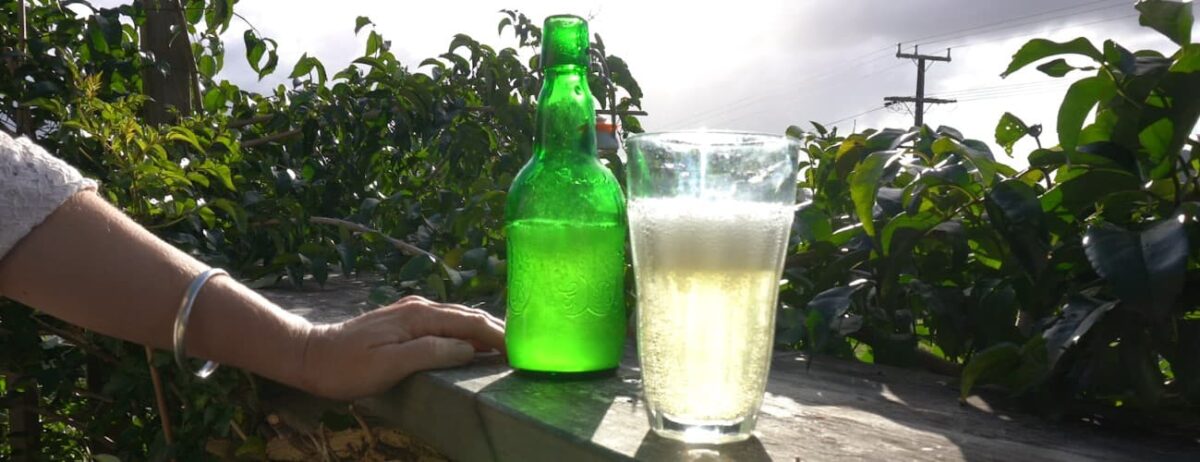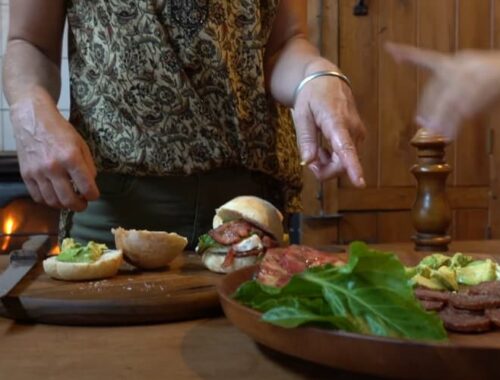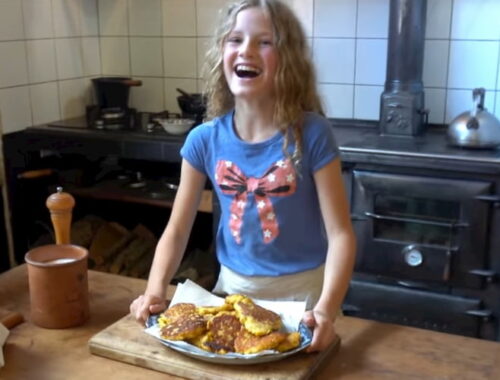
Old-Fashioned Ginger Beer
This authentic home-fermented ginger beer made a bit of an explosive impact in the video for our Plain White Buns recipe, so many people asked Janie for the method. Here her favourite method for making this type of old-fashioned ginger beer (adapted from the method shared by the wonderful Country Trading Co.), with some additional notes below the video.
Recipe and Method
Day 0 is establishing the bug, Days 1 – 6 is feeding it, and Day 7 is bottling and restarting the bug.
Day 0: add 2 cups of water, a few raisins and 2 teaspoons of sugar to a clean glass jar, and stir. Cover, and sit somewhere at room temperature, out of direct sunlight.
Day 1: feed it 2 teaspoons of sugar and 2 teaspoons of ground ginger
Day 2: feed it 2 teaspoons of sugar
Day 3: feed it 2 teaspoons of sugar and 2 teaspoons of ground ginger
Day 4: feed it 2 teaspoons of sugar
Day 5: feed it 2 teaspoons of sugar and 2 teaspoons of ground ginger
Day 6: feed it 2 teaspoons of sugar
Day 7 [one time only, the first time you reach Day 7]: drain off and discard the liquid, discard half the sediment, and add another 2 cups of water, another 2 teaspoons of sugar, stir in the retained sediment and then tomorrow you go back to Day 1.
Day 7 [normal, from every Day 7 except the very first]: dissolve 2 cups of sugar with 2 cups of boiling water in a large clean pot. Once dissolved, add 12 cups of cool water and then stir in the strained juice of 2 lemons. Strain your fermented ginger bug liquid into the mix, capturing and setting aside the sediment. Give the liquid all another good stir.
Wash your bottles well in hot soapy water, and rinse thoroughly. Bottle, adding a couple of raisins to each bottle if you wish. Fill the bottles a bit short of full, seal, and place somewhere safe at room temperature out of direct sunlight.
These will be ready to be refrigerated and enjoyed in another week’s time. You do not continue to feed the bottled beer over this final week, but you may wish to monitor the pressure building up, and relieve some of it throughout the week, particularly as you become accustomed to the strength of your individual bug.
Still on Day 7, restart your bug: combining half the sediment with another two cups of water and another 2 teaspoons of sugar, cover and tomorrow the cycle begins again at Day 1.
Ginger – as mentioned in the video, you could use freshly grated-ginger instead, but you will likely find a different method better suited to that.
Sugar – feeding it with plain white sugar is good, and your bug is just eating it, but those two cups of sugar added on bottling day could be a fancier type (rapadura, coconut sugar): just keep an eye on the effect it has on the strength of your bottled brew!
Stirring – some people don’t worry about stirring when feeding the bug, and if you do stir, try to avoid getting too much powder onto the walls of the jar.
Alcohol – this would be considered a ‘non-alcoholic’ beverage, here in New Zealand, with just minimal traces being produced as part of the natural fermentation. You could try making an alcoholic version by using the right yeasts, adding more sugar, and likely changing the brewing process [find a different method to follow!] – but you wouldn’t want to go confusing the two! You would likely find that the more-alcoholic you manage to make it, the less-palatable the taste, as the bug continues to consume all final added sugar. If your local culture or religion is strict about even negligible levels of alcohol, you might like to do more research on the topic before making your own, eg: Are Fermented Foods Halal?, and could always use a hydrometer/alcoholometer if concerned. I believe “Ginger Ale” is the artificially carbonated, non-fermented alternative, but it is just a ginger-flavoured soda drink, and not really the same thing at all!
Recipe – I’ve made different ginger beers over the years, and this has become my favourite method. I like how few ingredients there are, that it does not rely on artificial carbonation, or special “ginger beer” yeasts or anything like that. As mentioned at the top, this method is modified from a recipe shared by “The Country Trading Co.”, a family-owned supply store here in New Zealand that sell all sorts of useful products for people who want to live a simple and self-reliant life (and they have a USA store too, and can ship to UK/Australia!), including a bunch of fermenting supplies!




